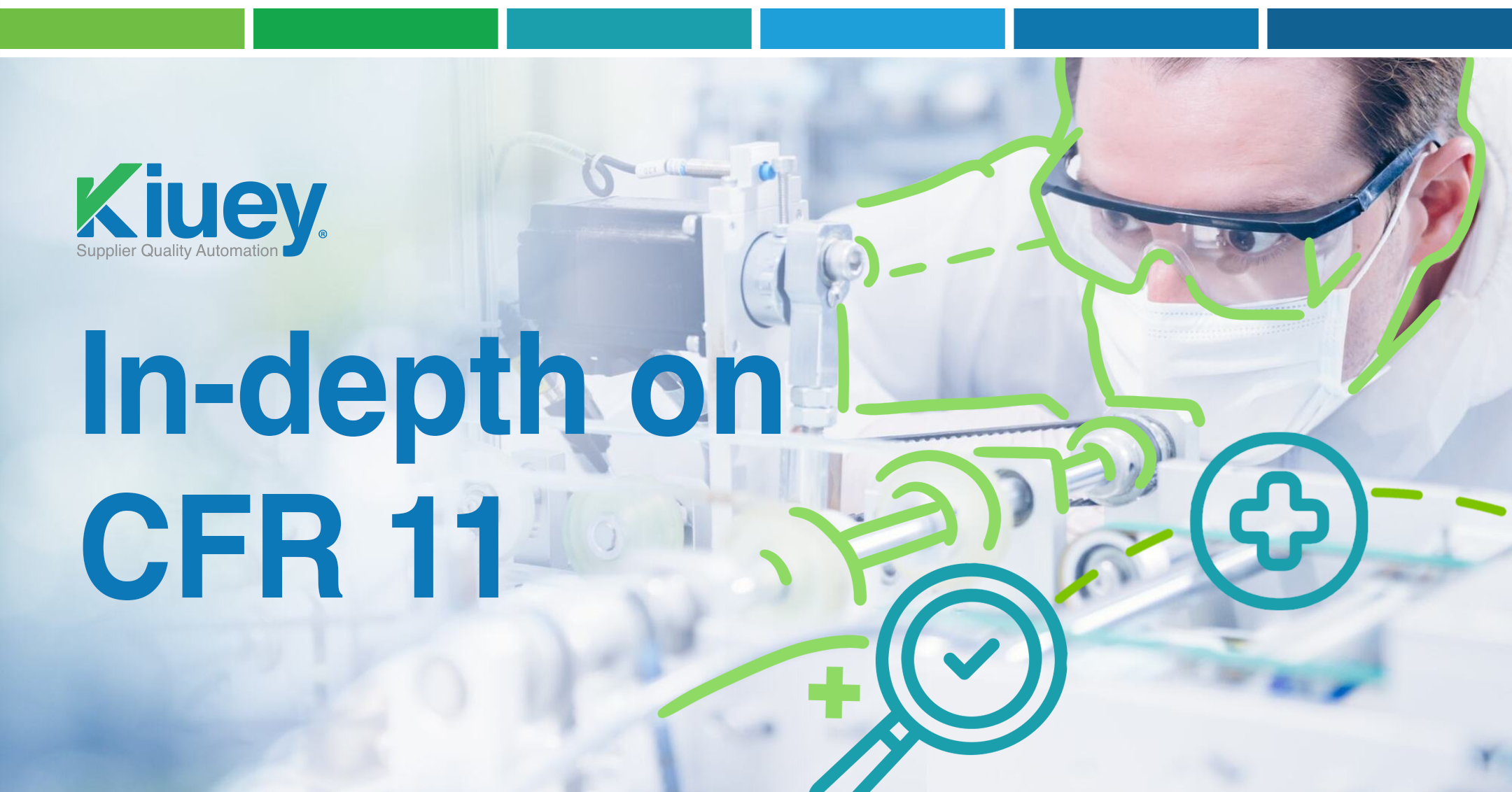
The U.S. Food and Drug Administration (FDA) plays a vital role in protecting public health by regulating medical devices. Part 11 of Title 21 of the Code of Federal Regulations (CFR) lays out the FDA’s requirements for electronic records and electronic signatures used by medical device manufacturers.
Implications of CFR 11
This regulation ensures the accuracy, authenticity, and confidentiality of electronic records, which must be accessible to authorized personnel only, and any changes made to them must be tracked. Electronic signatures used on these records must also meet specific criteria to be considered valid.
In a nutshell, any document or record generated and stored electronically qualifies, including those created by electronic Quality Management Systems (eQMS) and scanned paper copies that become the official record.
Electronic signatures on such records must include the signer’s printed name, date and time of signature, and the meaning of the signature (e.g., approval, review); given so, two main types of signatures arise within:
- Digital Signatures: Encrypted using a computer algorithm, providing a high level of security and tamper-resistance. The signer’s identity is verifiable.
- Electronic Signatures: More common, they represent a signer’s electronic representation on a document along with their identity, intent, and date/time of signing.
As an alternative, the regulation allows for signatures applied with a stylus to be equivalent to wet ink signatures. However, proper training is crucial to ensure personnel understand that repeatedly using a saved image of their signature doesn’t meet this requirement.
Each signature must be unique, and ideally, the date should be handwritten as well. Converting the document to a non-editable format like PDF helps prevent tampering.
CFR 11 on the medical manufacturer side
Given this circumstance, all medical device manufacturers, regardless of size, are required to comply with 21 CFR Part 11. This applies to startups, small businesses, and large corporations alike.
Medical device manufacturers are directly affected by 21 CFR Part 11 because it dictates how they handle electronic records and signatures. Here’s a breakdown of the implications:
- Record-keeping: They can’t simply switch to digital documents without following specific guidelines. The regulation ensures the electronic records are trustworthy and secure.
- Traceability and Audit Trails: Any changes made to electronic records must be tracked. This helps maintain accountability and simplifies investigations if needed.
- Electronic Signatures: Just using an electronic signature on a document isn’t enough. The signatures themselves must meet specific requirements to be considered valid.
- Compliance Costs: Implementing and maintaining compliant systems can involve costs associated with software, validation processes, and potentially additional personnel training.
- Reduced Risk: Following the regulation helps mitigate risks associated with data integrity and security breaches.
- Efficiency and Accuracy: While there may be initial costs, transitioning to compliant electronic systems can lead to increased efficiency and improved accuracy in record-keeping over time.
Overall, 21 CFR Part 11 adds a layer of complexity to medical device manufacturers’ record-keeping practices, but it serves the important purpose of protecting public health by ensuring the accuracy, authenticity, and traceability of electronic records.
Subscribe to our newsletter.
Your go-to destination for insights, best practices, and innovative solutions in supplier quality assurance.
Recent Posts
PPAP strategies for effective supplier collaboration with Kiuey
December 9, 2025
How supplier quality audits drive zero defect manufacturing
December 4, 2025
Creating an effective supplier audit checklist for better compliance
November 27, 2025
Categories
Let's talk to see how PPAP Manager can help your company to save time and money.




